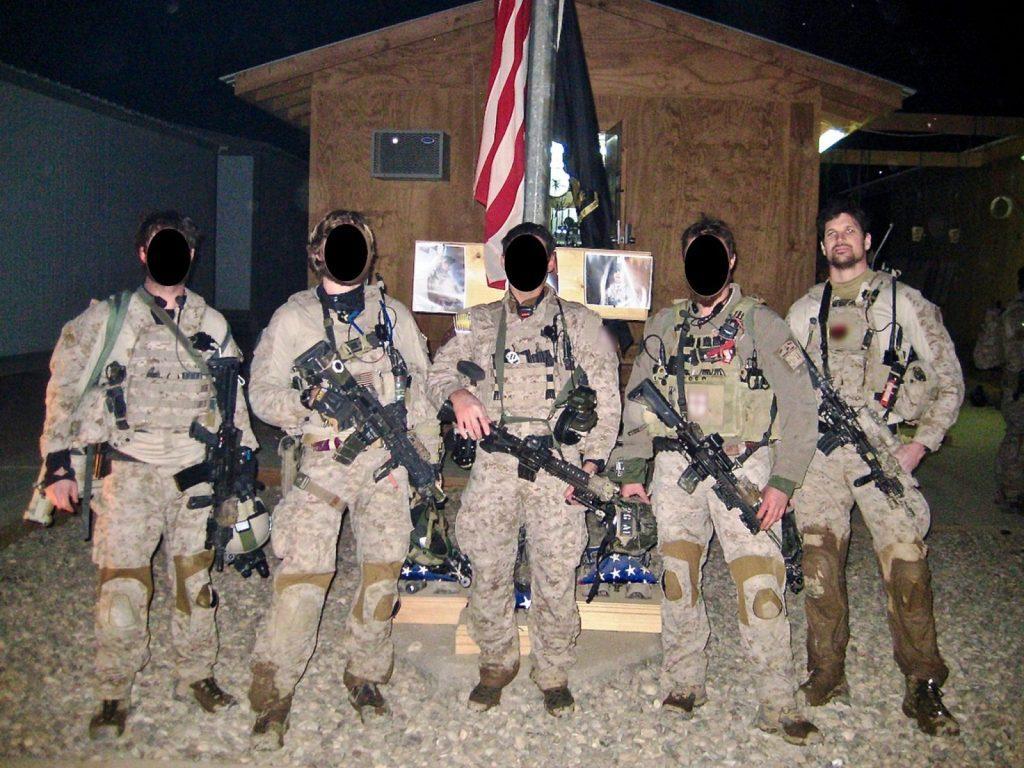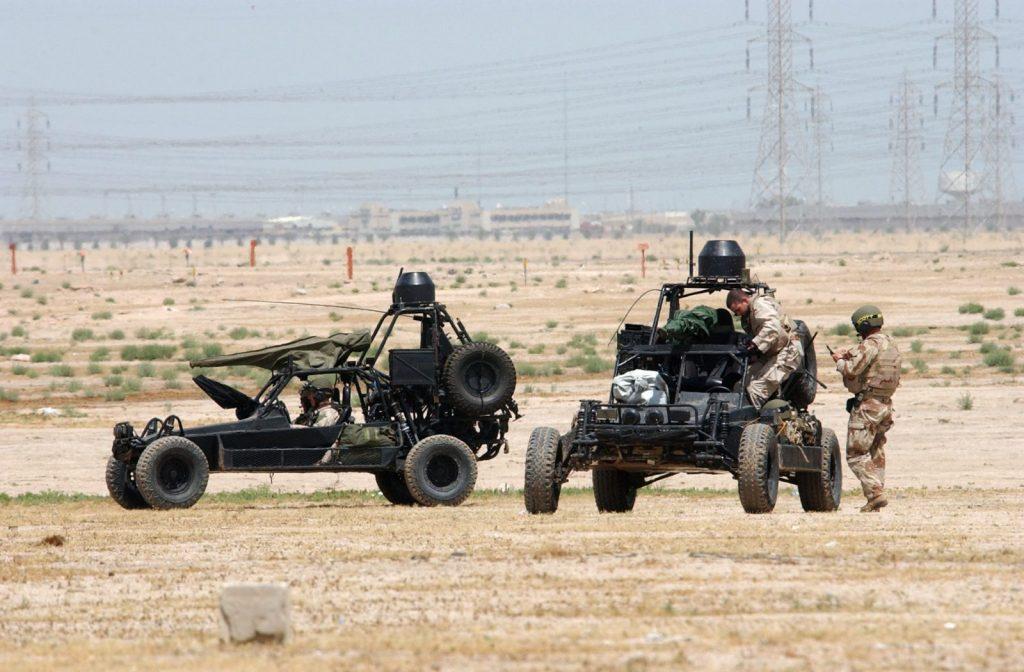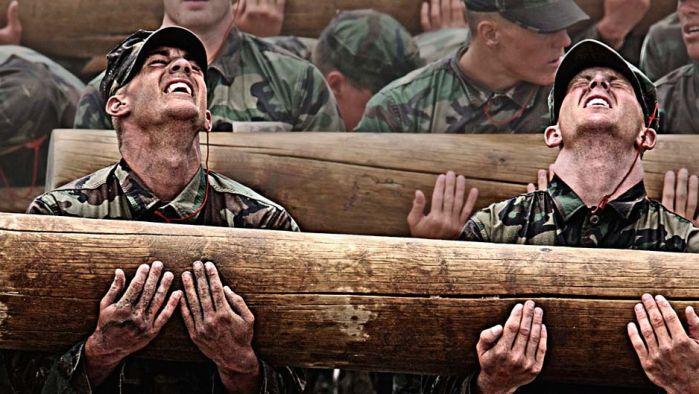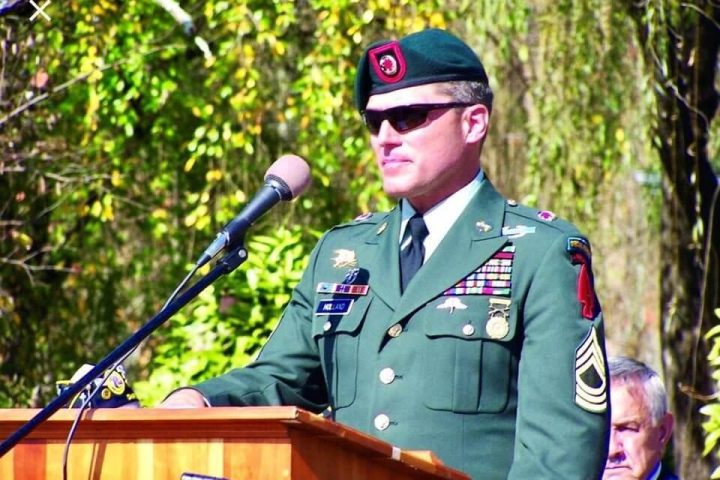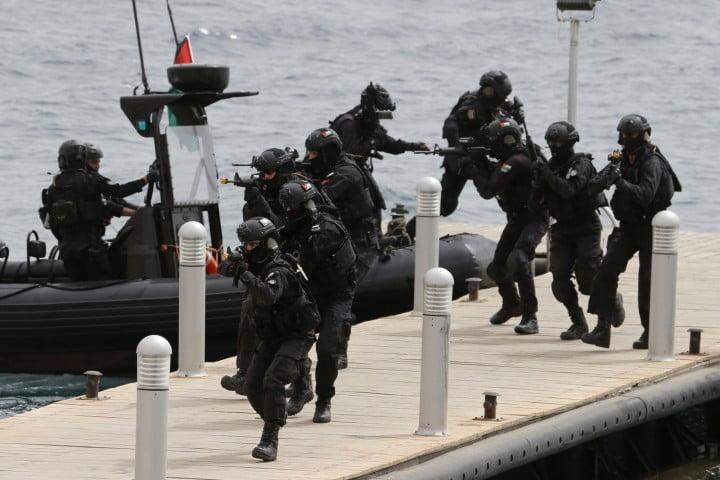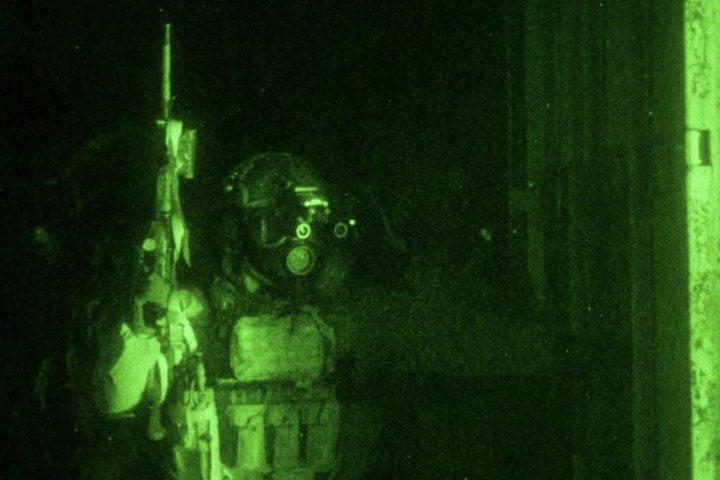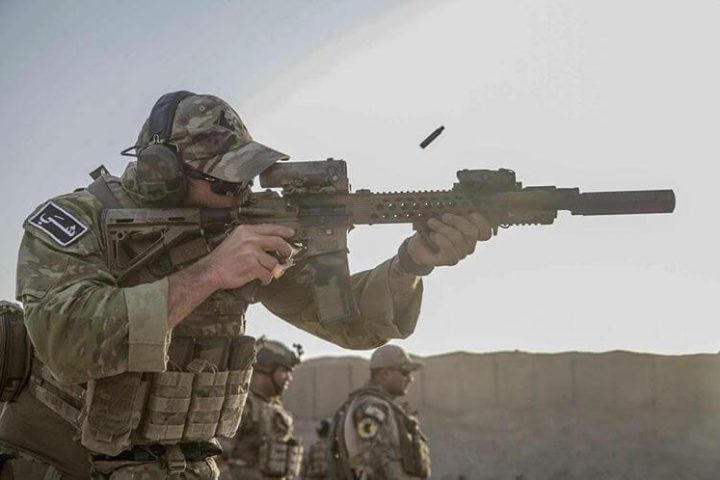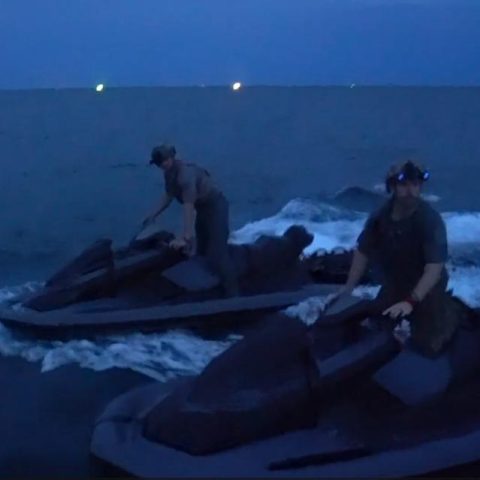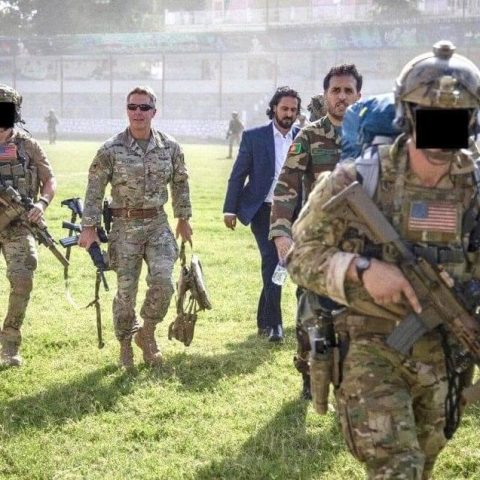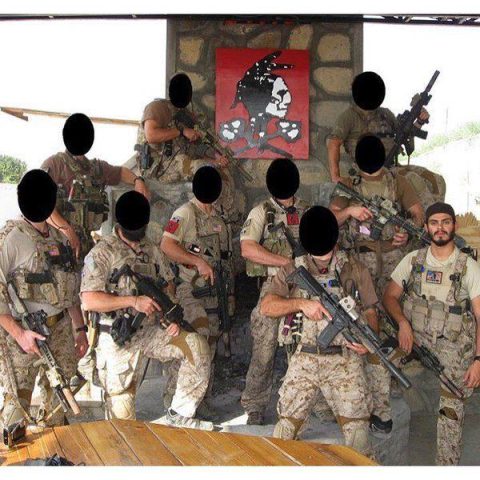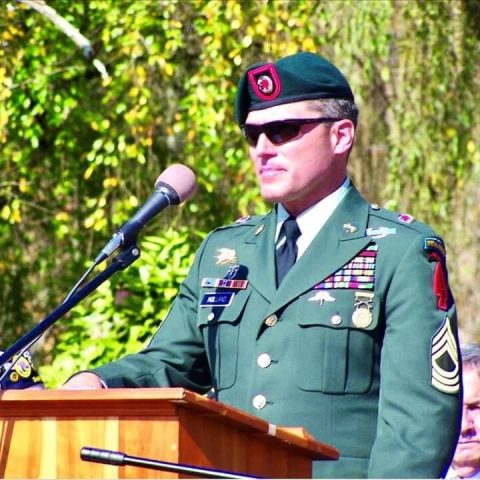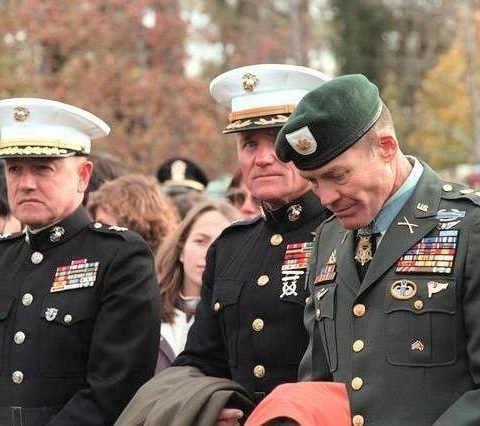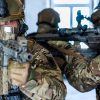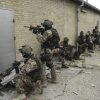The SEAL Team 6 (ST6) or DEVGRU is an elite special operations team in the US Navy under the direct command of Joint Special Operations Command (JSOC). It is a special operation forces unit considered a Tier 1 or Special Missions Unit alongside Army Delta Force and 24th Special Tactics Squadron.
Introduction
The SEAL Team 6 is, in fact, the Naval Special Warfare Development Group (NSWDG), commonly known as DEVGRU (DEVelopment GRoUp). Under JSOC, they are often referred to as Task Force Blue. The unit headquarters are located at Dam Neck Annex NAS Oceana, Virginia Beach, Virginia, U.S. Among the most famous unit operators were Richard Marcinko, and Britt Slabinski.
History
The SEAL Team 6 has origins in a Navy unit created after a failed operation in Iran, codenamed Operation Eagle Claw. The unit was known as the Development Group (DEVGRU). The Joint Chiefs of Staff created a task force known as the TAT (Terrorist Action Team) at the dawn of the Iran hostage crisis in 1979. One of the TAT representatives was Richard Marcinko, who would later be appointed as the first commanding officer of the newly created Seal Team 6. He will be dubbed as the father of Seal Team 6.
At the time, TAT had only one objective: developing a plan to free the American hostages held in Iran. In the wake of the disaster at the Desert One base in Iran, the Navy saw the need for a full-time counter-terrorist unit and tasked Richard Marcinko with its design and development.
The origin of the name SEAL Team 6
The unit was named Seal Team 6 to confuse Soviet intelligence regarding the number of actual SEAL teams. Only SEAL Team 1 and SEAL Team 2 were available at that time. The first members of the unit were picked from the UDT/SEAL community. The official birthdate of SEAL Team 6 was in November 1980. Upon formal commissioning, the unit was sent to the intense and progressive six-month-long training.
SEAL Team 6 was mission-ready in a short time and had become the US Navy’s premier hostage rescue and counter-terrorism unit. Marcinko held the command of SEAL Team 6 for three years, from 1980 to July 1983, instead of the typical two-year command in the Navy. SEAL Team 6 started with 75 operators.
According to Marcinko, the annual ammunition training allowance for the command was more extensive than that of the US Marine Corps at the time. The SEAL Team 6 has virtually unlimited resources at its disposal. In 1984, Marcinko and a dozen SEAL Team 6 would form a “Red Cell” (also known as OP-06D), a special unit designed to test the security of American military installations.
Richard Marcinko’s controversies
In 1987, SEAL Team 6 was dissolved. Reasons for the disbanding are varied, but there are rumors it was because of the bad reputation of the unit within the Navy. The main reason for this was the unit’s founder Cdr. Richard Marcinko. His controversial running of the unit gave Seal Team 6 many enemies. Later, Marcinko will be charged with conspiracy and bribery. He was sentenced to 2 years in prison.
After Marcinko left, a new unit named the “Naval Special Warfare Development Group” was formed, essentially as SEAL Team 6’s successor. The name SEAL Team 6 is often used about DEVGRU.
Mission
Their entire mission is classified, and secrecy about DEVGRU still rolls around. Still, it is known that their mission is thought to include preemptive, pro-active counter-terrorist operations, counter-proliferation (efforts to prevent the spread of both conventional weapons and WMD), and the elimination or recovery of high-value targets (HVTs) from hostile or unfriendly nations and territories.
DEVGRU is a Tier 1 Special Mission Unit that authorized the use of preemptive actions against terrorists and their facilities worldwide. Since the Global War on Terror started, DEVGRU (SEAL Team 6) has evolved into a multi-functional special operations unit with a worldwide operational mandate.
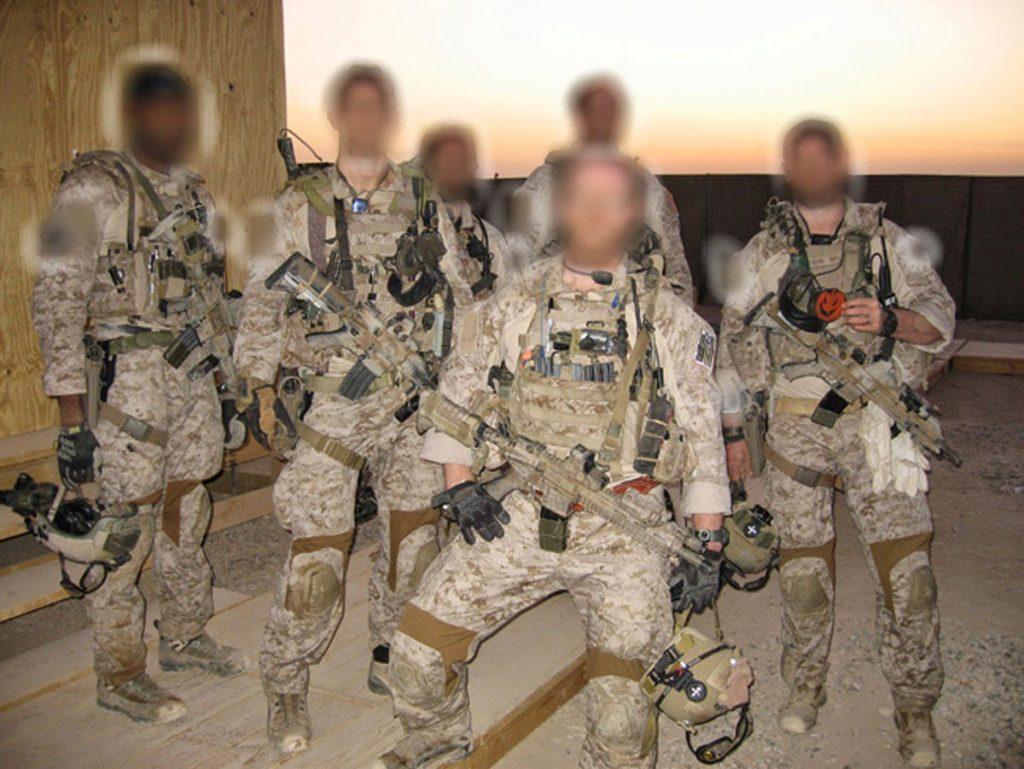
According to the Navy, the Naval Special Warfare Development Group’s mission is “to provide centralized management for the test, evaluation, and development of equipment technology and Techniques, Tactics and Procedures for Naval Special Warfare.”
There is a lot of secrecy surrounding DEVGRU; officially, it’s responsible for developing and testing special naval warfare weapons, techniques, and equipment. DEVGRU and the Army’s Delta Force train and deploy on counter-terrorism missions, usually part of a joint special operations task force (JSOTF).
Selection and Training
It’s hard to become a SEAL, even harder to make it to the DEVGRU. The dropout rate is 80% going thru BUD/s. Then once the operators are to Green Team, 50% of those SEALs fail selection. If you pass, your picture is put on a board, and the team either approves of you or rejects you. It has to be unanimous to approve, or you’re rejected. The SEAL community is relatively small, so there is a good chance everyone knows you or has heard of you.
The operators willing to try to join SEAL Team 6 (DEVGRU) must first spend five years in one of the regular SEAL teams; then, they can apply. Instead, they are going through a PT test. It consists of three days of physical and psychological testing, including a Physical Screening Test (PST). Candidates must exceed the minimum requirements and perform at the highest level possible.
Next phase, the candidate is interviewed by a panel of Team 6 members. If the candidate is chosen, he is sent to the Green Team for a six- to eight-month Operators Training Course. It is an evaluation team where candidates do many physical things, CQB, spending a lot of time at “Kill House,” and more.
The training course attrition rate is usually around 50 percent; out of the original 20 candidates, 12 completed the course during one selection course. Those who do not pass the selection phase are returned to their previous assignments and can try again in the future. The others are assigned to the one DEVGRU squadron.
An interesting fact is that the Central Intelligence Agency’s highly secretive Special Activities Center (SAC) and, more specifically, its elite Special Operations Group (SOG) often works with and recruits from Seal Team 6 (DEVGRU).
Organization
DEVGRU is divided into color-coded line squadrons:
- Red Squadron (Assault)
- Gold Squadron (Assault)
- Blue Squadron (Assault)
- Silver Squadron (Assault)
- Black Squadron (Intelligence, Reconnaissance, & Surveillance)
- Gray Squadron (Mobility Teams, Transportation/Divers)
- Green Team (Selection/Training)
Squadrons in DEVGRU
Each assault squadron also has a specific nickname. Examples include Gold Squadron’s Knights, Red Squadron’s Indians, Blue Squadron’s Pirates, Gray Squadron’s Vikings, etc. A variety of support personnel supports the assault squadrons, including cryptologists, communicators, EOD technicians, dog handlers, and sometimes airmen from the United States Air Force 24th Special Tactics Squadron, the Air Force’s JSOC element.
According to the GAO report on special operations forces, in 2014, DEVGRU had 1,787 authorized positions, of which 1,342 were military and 445 were civilian.
Red Squadron
Red Squadron is one of the most publicly exposed DEVGRU / SEAL Team 6 squadrons because of the public appearances of the two former operators (Marc Bissonette and his book ‘No Easy Day’ and Rob O’Neill, a man who claims to have shot Usama Bin Laden in Operation Neptune Spear). It is, in fact, an assault squadron, identified by its unique logo, which has an image of a Native American Indian on it. The operators serving in this squadron commonly refer to themselves as “the tribe.”
According to various military sources, Red Squadron was the only squadron involved in the raid on Usama Bin Laden’s compound in Abbottabad in May 2011. Half of the Red Squadron operators (about 25) were chosen for the mission because they were the only available squadron between alert status and deployment.
Gold Squadron
Same as the Red Squadron, Gold Squadron is engaged in assault operations. They operate under their unique logo (Knight / Dragon with a trident). This squadron sustained the largest loss of life in DEVGRU history in the Extortion 17 incident. Among those killed in duty, a few publicly known operators are Ryan Owens, Jonas B. Kelsall, Robert J. Reeves, and Stephen M. Mills.
Blue Squadron
In the first days of the newly formed SEAL Team 6, the Blue and Gold squadron were the only ones available. The Blue Squadron logo features a pirate skull and crossbones from the original Jolly Rogers pirate flag. The most notable publicly known member of the Blue Squadron is Britt Slabinsky, a Command Master Chief for SEAL Team 2 (2010-2012) before moving to the DEVGRU. He became publicly known when President Donald Trump awarded him the Congressional Medal of Honor.
Silver Squadron
The ‘youngest’ assault squadron in SEAL Team 6 / DEVGRU was formed sometime around 2008 to answer the rapid increase of operations conducted by SEAL Team 6. The Silver Squadron logo is assembled of the other squadrons’ logos, with a pirate skull, sword, and two pickaxes crossed over one another.
Their involvement in the rescue of Linda Norgrove was part of the controversial investigation. After being kidnapped and held hostage in the eastern Kunar province of Afghanistan, the Silver Squadron was sent on a mission to rescue her. During the attempted rescue, terrorists killed her.
The original cause of death was thought to be at the hands of her captors, but a subsequent investigation revealed that she was killed by a grenade thrown by one of the SEALs. Notable Silver Squadron members include Kyle Milliken, William Mulder, Sean Flynn, and Collin Thomas.
Black Squadron
Black Squadron is an ultra-secretive part of secretive DEVGRU / SEAL Team 6 with intelligence, reconnaissance, and surveillance involvement. It is some of the spying wing and the sniper unit of SEAL Team 6. In War on Terror, they were re-tasked with AFO and “Operation Preparation Of Battlespace” (OPB) in mind.
It means, on the ground, they are sent as the recon to conduct surveillance of targets in which the assault squadrons may ultimately conduct operations. They are different from other squadrons as they have women, but it’s important to note that none are SEALs. Having women in the group is to help operators “blend in” in a more low-key way.
Black squadron is estimated to have over 100 operators at their disposal.
Gray Squadron
Gray squadron is another special part of the DEVGRU. Their operators are tasked with driving the custom water vehicles, including high-performance speed boats (MK V SOC Craft), SEAL Delivery Vehicles (SDVs), and Special Operations Craft-Riverine.
As you may assume, they serve as the ‘taxi’ service for the assault squadrons.
Green Team
The Green Team serves as the active-duty SEALs tryout for SEAL Team 6. It is estimated that around 100 active-duty SEALs report for screening for the Green Team. The washout rate is reported to be around 50% of candidates. Assuming you pass the initial screening test, you may be invited to train in the Operators Training Course. Otherwise referred to as Green Team.
It is a 6-8 month course to identify those operators who are good enough to serve in the Navy’s most elite unit. The course is essentially an amped-up training version of what SEALs already do and is divided up into 3 phases:
- Close Quarters Battle (CQB),
- Skydiving,
- Survival, Evasion, Resistance, and Escape (SERE)
DEVGRU troop
The core end-unit of DEVGRU is very similar to a typical SEAL troop in that the manning structure is spread out in qualifications. Not all SEALs are medics; not all SEALs are snipers; not all SEALs are SDV (SEAL Delivery Vehicle) operators. Not all SEALs will be K-9 handlers. A wide variety of qualifications will never be assimilated to every operator.
There are some base skillsets that all SEALs will have: They will all be Combat Swimmers, they will all be Parachute qualified (which is wide-ranging in itself), etc., etc. Each Team in DEVGRU will have operators that are specially qualified in sniping. Even though they have the sniper qualifications, that doesn’t mean that is all they will ever do.
Each troop has around 16 operators and is led by a senior commissioned officer and a platoon (troop) chief. DEVGRU squadrons can usually be divided down into smaller teams of SEALs, including:
- Two squads, 8 SEALS in each squad
- Four elements, 4 SEALs in each element
DEVGRU Snipers
Black Squadron is DEVGRU’s sniper unit, the only unit one of the few that contains women operators. While they mainly conduct intelligence-gathering operations, they can handle strike operations.
Notable commanding officers
Command of DEVGRU became a captain’s billet following Richard Marcinko’s departure. Notable Commanding Officers include:
- Eric T. Olson – 1994 to 1997
- Albert M. Calland III – 1997 to 1999
- Joseph D. Kernan – 1999 to 2003
- Edward G. Winters, III – 2003 to 2005
- Brian L. Losey – 2005 to 2007
- Scott P. Moore – 2007 to 2009
Britt Slabinski was also one of the famous members of the ST6.
Ranks in Seal Team 6 / DEVGRU
Ranks in SEAL Team 6 are equal to US Navy ranks. Each assault squadron, usually led by a Commander (O-5), is divided into three troops of enlisted SEALs, often called assaulters. Each of these troops is commanded by a senior commissioned officer, usually a Lieutenant Commander (O-4). A troop chief also serves as an adviser to the troop commander and is the highest-enlisted SEAL in the troop, usually a Master Chief Petty Officer (E-9).
A DEVGRU troop is further divided into smaller teams of SEALs.[23] Senior enlisted SEALs lead these individual teams of assaulters, usually a Senior Chief Petty Officer (E-8), sometimes a Chief Petty Officer (E-7). The rest of these teams are filled out with more Chief Petty Officers and Petty Officers First Class, each member with a respective role.
Operations
SEAL Team 6 / DEVGRU members perform high-risk operations. Such operations include Jessica Buchanan and Poul Hagen Thisted’s successful rescue, the attempted rescue of Linda Norgrove, and the rescue of American doctor Dilip Joseph. In 1991, the successful recovery of Haitian President Jean-Bertrand Aristide and his family during a coup that deposed him. During the 1990s, they went after Bosnian war criminals.
They are responsible for the raid that led to the death of the most wanted terrorist, Osama Bin Laden. They also captured Radislav Krstic, a suspected and later convicted for the massacre at Srebrenica during the war in Bosnia and Herzegovina, one of the worst Bosnian war criminals. They also detained a dictator Manuel Noriega. Seal operators also participated in Somalia raids on Mohamed Farah Aidid, and that operation appeared in the Hollywood blockbuster Black Hawk Down.
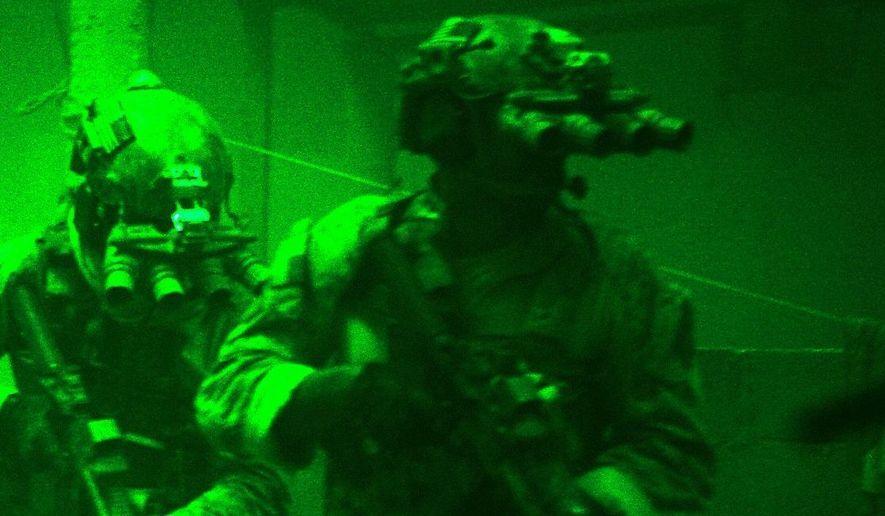
Operation Neptune Spear (2011)
The Seal Team 6 operators killed Osama bin Laden, the notorious al-Qaida and main perpetrator of the 9/11 attacks, in Operation Neptune Spear. That operation has become one of the military’s most publicly recognized special operations missions.
Rescue of Philip Walton (2020)
On October 31, 2020, US Navy SEAL Team 6 (DEVGRU) conducted a daring hostage rescue operation in Northern Nigeria to recover an American citizen identified as Philip Walton. Terrorists guarded Philip Walton with seven captors. In a short firefight, operators killed all but one of the seven captors, according to officials directly knowing about the operation. No American military personnel was injured during the operation.
Publicly-known operations
Since they were founded, they took part in hundreds, even thousands, of covert ops. Some of them are:
- Operation Urgent Fury (1983),
- Operation Just Cause (1989),
- Operation Pokeweed (1990),
- Operation Desert Storm (1991),
- Battle of Mogadishu (1993),
- The hunt on war criminals in Bosnia and Herzegovina (1998),
- Rescue of Captain Phillips (2009)
- an attempt to rescue Linda Norgrove (2010),
- the conflicts in Afghanistan and Iraq (2001-present),
- Operation Neptune Spear – the killing of Osama bin Laden (2011),
- Al-Shabaab raids in Somalia (2013)
- the battle against ISIS (2015-2019)
- Rescue of Philip Walton in Nigeria (2020)


